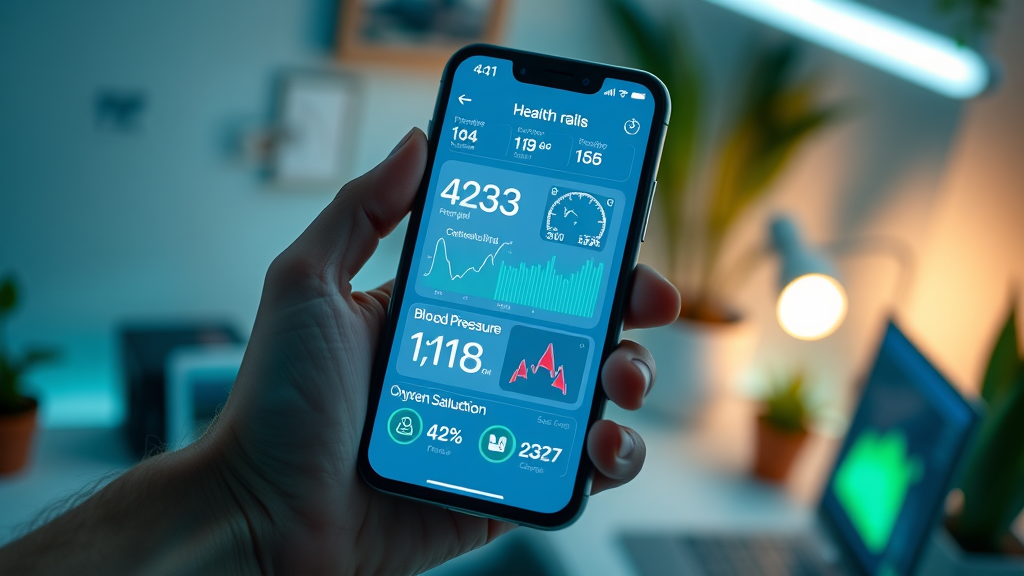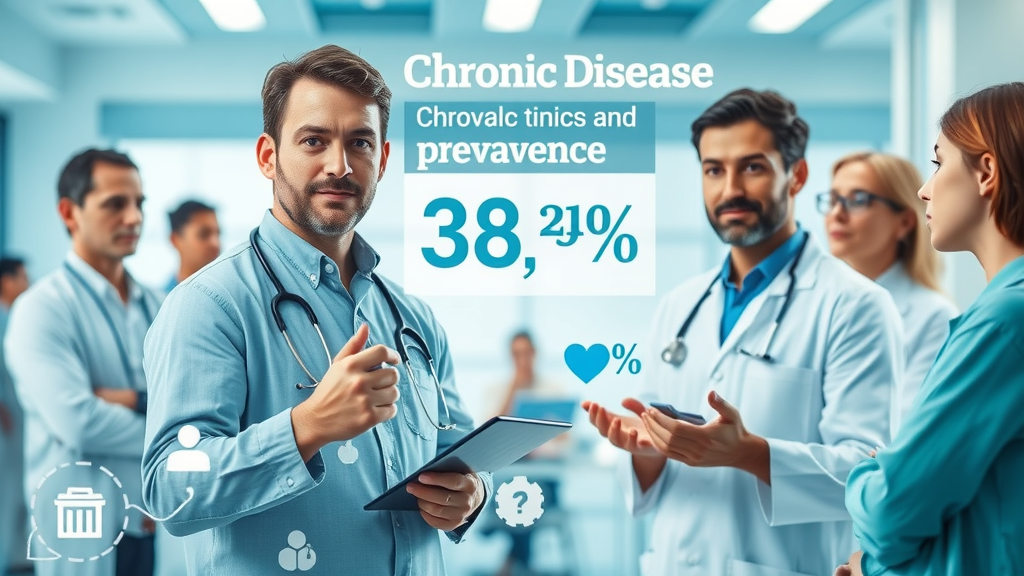Imagine having a personal health coach right on your wrist—tracking your vital signs, motivating you to move, and alerting you to potential health issues in real time. Welcome to the world of digital health monitoring , where smart technology empowers you to take proactive control of your wellness journey. In this article, you’ll discover how digital health monitoring can truly unlock the secret to better living, bringing you actionable insights, advanced tools, and a new level of peace of mind.
Explore the Power of Digital Health Monitoring for Improved Wellness
The core promise of digital health monitoring is simple: bring healthcare from the clinic into your daily routine. By using devices like wearables, smartwatches, and connected medical tools, you get continuous, real-time feedback about your health right at your fingertips. Unlike traditional health checkups—scheduled every few months or even annually—digital health monitoring provides instant snapshots of your well-being every moment of every day. This means you can see the impact of daily choices on your health, detect worrying trends earlier, and tailor your lifestyle to support your own unique needs.
Practical examples are everywhere. A fitness tracker may remind you to get up and move if you’ve been sitting too long. A smartwatch may track your heart rate during stress, or send alerts if something seems off. For people managing conditions like hypertension or diabetes, digital health monitoring devices can send real-time metrics directly to both patient and health provider, allowing for earlier intervention and fewer surprises. The seamless integration of these technologies into daily life is transforming how we view, improve, and maintain our wellness.

How Digital Health Monitoring Transforms Your Daily Health
Digital health monitoring isn’t just a trend—it’s a lifestyle shift, merging technology and healthcare to help you live better every day. The information from these devices does more than simply record your stats; it actually drives personal change. Suddenly, you’re empowered to connect daily actions—like walking more, sleeping better, or managing stress—with real health outcomes, evident in the numbers that appear on your screen. For instance, seeing your resting heart rate drop after committing to daily walks can be deeply motivating, creating a positive feedback loop that sustains healthy habits.
Many users of digital health monitoring devices find it’s easier to set and reach goals. Want to get more sleep? A sleep tracker offers concrete data on your progress and tips to improve your habits. Striving for increased activity? Your step count and active minutes provide immediate feedback. Even subtle patterns, such as how work stress impacts your blood pressure or sleep quality, become visible and actionable. Over time, this continuous feedback transforms your approach to self-care by making small, daily changes both measurable and rewarding.
- Unlock real-time insights into your vital signs
- Ensure early detection of potential health issues
- Personalize your wellness journey with actionable data
- Seamlessly integrate digital health monitoring with lifestyle changes
Core Benefits of Digital Health Monitoring
Embracing digital health monitoring brings several core benefits to anyone interested in managing their health proactively. First, these devices deliver a level of accountability and control that’s simply not possible with occasional doctor visits alone. You’re empowered to track changes over time and make informed decisions on the go. Whether it’s noting a consistent spike in blood pressure or seeing physical improvement through increased daily step counts, these insights keep you motivated and informed.
Second, the data gathered goes beyond personal benefit; it forms a foundation for a true partnership with your healthcare team. Because health monitoring devices store and often share information securely, your doctor can gain a more accurate understanding of your day-to-day health patterns—not just a snapshot from an annual checkup. As a result, medical professionals can offer advice or adjustments that are personalized and timely, supporting prevention and fast intervention when needed.
Empowering Individuals with Accurate Health Data
Accurate health data is the backbone of effective wellness management. With digital health monitoring, users receive high-fidelity information—such as heart rate variability, blood pressure readings, or sleep efficiency—directly from their bodies. This data isn’t just numbers; it becomes a roadmap for daily choices and long-term health goals. By providing continuous, objective feedback, these technologies help demystify wellness, making it accessible to everyone, regardless of age or pre-existing health concerns.
Moreover, access to real-time data equips users to quickly spot inconsistencies or worrying trends that might require medical attention. In some cases, early detection of arrhythmias or unexpected spikes in blood glucose has led users to seek timely help, potentially averting serious complications. As these tools continue to improve in technical accuracy and user-friendliness, the gap between personal data and actionable health decisions continues to shrink, placing the power of proactive health management firmly in your hands.
Improved Patient-Doctor Communication Through Digital Health Monitoring
Digital health monitoring opens the door for richer patient-doctor conversations . Rather than relying on memory or generalized symptoms, patients can provide detailed records of their health metrics over weeks or months. This precision means that subtle patterns—such as increased heart rate on stressful workdays or improved oxygen saturation after exercise—are no longer lost. Instead, such data become starting points for truly customized care plans, tailored specifically to individual needs and goals.
For clinicians, having access to this continuous data means fewer surprises and better decision-making. It enables doctors to identify trends, recommend early interventions, and monitor the effects of prescribed treatments more accurately. The result? Safer, more efficient, and holistic healthcare. This feedback loop can even increase trust and satisfaction, as both patient and doctor are equipped with the same up-to-date, meaningful information.
“Digital health monitoring bridges the gap between routine checkups and real-time health management, providing peace of mind for users and clinicians alike.”

Digital Health Monitoring Technologies Explained
The toolbox of digital health monitoring technologies continues to expand, offering a range of solutions for individuals and healthcare settings alike. Whether you're focused on fitness, chronic disease management, or broad wellness, it's important to understand what each type of device offers. Wearable fitness trackers prioritize activity and heart rate monitoring, making them ideal for users who want to track movement and daily goals. Meanwhile, smartwatches go a step further, integrating notifications, stress monitoring, and even ECG functionality, all accessible from your wrist.
Connected medical devices extend these capabilities for those needing specialized monitoring, such as blood glucose or blood pressure devices that sync data wirelessly to your phone or directly to your healthcare provider. As digital health monitoring evolves, interoperability and ease of use continue to improve, allowing users to seamlessly combine data across different platforms and applications. By choosing the technology that best fits your needs, you can create an ecosystem tailored precisely to your health goals.
| Device Type | Primary Function | How it Supports Wellness |
|---|---|---|
| Wearable Fitness Trackers | Monitors activity & heart rate | Provides instant feedback |
| Smartwatches | Multi-parameter health tracking | Integrates health and notification alerts |
| Connected Medical Devices | Blood pressure, glucose, ECG | Enables remote patient care |
Key Metrics Tracked in Digital Health Monitoring
The true power of digital health monitoring lies in its ability to track essential health metrics effectively and consistently. Most modern devices go far beyond simply counting steps; they measure everything from heart rate to oxygen saturation, and even deliver an in-depth analysis of your daily activity and sleep patterns. This comprehensive data collection offers a 360-degree view of your wellness, empowering you to see the interplay between physical activity, rest, and overall health.
With easy-to-read dashboards—thanks to advanced app interfaces—you can quickly spot trends, set achievable targets, and make evidence-based adjustments to your lifestyle. For example, if your sleep quality dips on nights when you exercise late, your data will reveal it, helping you refine your habits for better outcomes. Understanding these metrics is the first step toward an empowered, proactive health journey.
Vital Signs: Heart Rate, Blood Pressure, Oxygen Saturation
The top metrics tracked by most digital health monitoring devices include heart rate, blood pressure, and oxygen saturation. Monitoring your heart rate provides ongoing insight into cardiovascular fitness, stress responses, and even potential medical conditions. Blood pressure tracking is vital for people at risk of hypertension, while oxygen saturation—often measured by pulse oximeters built into wearables—can indicate respiratory and cardiovascular health, especially during exercise or sleep.
Such real-time monitoring enables you to notice fluctuations—like an unusually high resting heart rate or a drop in oxygen levels—that may signal the need for timely medical consultation. By having these data points at your fingertips, you’re better equipped to partner with your healthcare provider and to make daily choices that positively impact long-term well-being.

Daily Activity and Sleep Patterns
Beyond vital signs, activity and sleep metrics are cornerstones for any effective digital health monitoring strategy. Devices track your total steps, workout intensity, sleep duration, and sleep quality, providing a detailed map of your daily rhythms. By reviewing these stats, you can quickly see the impact of lifestyle changes, such as adjusting workout times or improving bedtime routines, on your overall health.
Many smart devices also track calories burned and, for those with conditions like diabetes, record blood glucose levels automatically. By having this data in a single app or dashboard, you’re able to connect the dots between movement, diet, and restorative sleep, making your wellness plan both actionable and adaptive. Continual monitoring and easy visualization help drive long-term healthy habits.
- Steps taken
- Calories burned
- Sleep duration and quality
- Blood glucose levels (if applicable)
How to Choose the Right Digital Health Monitoring Device
With so many devices available, selecting the right digital health monitoring tool can feel overwhelming. Start by clarifying your personal wellness goals : Do you want to track basic activity, or do you need more advanced features, such as ECG or blood glucose monitoring? Consider who will use the device—some wearables are designed for specific populations, such as older adults or children, and offer simplified displays or enhanced accessibility features.
Pay attention to compatibility with your smartphone or computer, battery life, the quality of the accompanying app, and the ease with which you can interpret data. For those managing chronic conditions, integration with electronic health records or secure sharing with healthcare providers can also be crucial. Taking time to research and—if possible—test devices in store ensures your investment will truly support your health goals.
Features to Consider for Your Wellness Goals
Not all digital health monitoring devices are created equal. Key features to evaluate include the types of metrics tracked (such as steps, heart rate, sleep, or blood glucose), notification and alert systems for unusual readings, and compatibility with third-party health apps. Some devices offer advanced analytics, providing trend reports that are easy to understand and send to your doctor.
A robust support system—such as responsive customer service, user guides, and regular software updates—can also improve your experience significantly. For devices worn on the body, consider comfort, durability, and water resistance to ensure you’re able to wear it everywhere life takes you.

User Experience and Compatibility
User experience should never be overlooked when choosing a digital health monitoring device . An intuitive interface, easy setup, and clear data visualizations make a world of difference in long-term use. A confusing or buggy app can derail even the strongest intentions. Look for products with high ratings for their companion apps and strong integration with your other health tools—such as food trackers or telehealth services.
Also consider device compatibility with both iOS and Android systems, as limitations here can impact both usage and data sharing with partners or providers. Devices that sync effortlessly and offer real-time notifications ensure you make the most of every insight, setting you up for a smooth, seamless digital health journey.
Success Stories: Real Results with Digital Health Monitoring
Thousands of people have already transformed their wellness through digital health monitoring. For example, many users report improved exercise consistency and weight loss by tracking daily steps and calories. Others find that alert-based blood pressure monitoring helps them manage hypertension, avoid medication changes, and better understand how stress or meals affect their readings. One of the biggest advantages cited is the ability to catch trends before they become bigger concerns, resulting in fewer emergency visits and more productive healthcare appointments.
Healthcare professionals have likewise seen positive impacts. Patients who use these tools often provide more accurate health histories, leading to targeted treatment and improved satisfaction. By jointly reviewing data, both doctor and patient come away with a clearer, shared understanding of what drives well-being day by day.
“Since I started using digital health monitoring, I’ve been able to proactively manage my health—and my doctor noticed the improvement right away.”

Best Practices for Maximizing Digital Health Monitoring
To get the most out of your digital health monitoring device, it’s crucial to develop consistent habits and stay engaged with your data. Setting specific, achievable health goals—such as aiming for 10,000 daily steps, eight hours of sleep, or maintaining a target heart rate range—creates a sense of purpose and direction. Regularly syncing and reviewing your data ensures that trends and unusual readings are not missed, allowing for quick adjustments and sustained motivation.
Another best practice is to share your reports with your healthcare provider, especially before annual physicals or specialist visits. Bringing concrete data supports richer discussions and more tailored advice. Finally, keep your devices and apps updated to access the latest features and security enhancements, ensuring your experience is seamless and your information protected.
- Set measurable health goals using your device
- Regularly sync and review your data
- Share reports with your healthcare provider
- Stay updated on software and app features
People Also Ask About Digital Health Monitoring
How accurate are digital health monitoring devices?
Digital health monitoring devices have become increasingly accurate over the years, thanks to advances in sensor technology and software algorithms. While most fitness trackers and smartwatches provide reliable measurements for heart rate, step count, and sleep, clinical-grade devices deliver even higher accuracy for metrics like blood pressure and ECG. However, consistency in wear and correct positioning can influence results, so always follow manufacturer guidelines for best outcomes.
Are digital health monitoring apps private and secure?
Most reputable digital health monitoring apps implement strict data privacy and security measures, including encryption and secure cloud storage. Users typically have control over data sharing and access settings, enabling them to decide which information gets shared with providers or third-party apps. It’s always important to review privacy policies and enable features like two-factor authentication to further protect your health data.
Can digital health monitoring help with chronic disease management?
Absolutely. Digital health monitoring devices are especially beneficial for those managing chronic conditions like diabetes, hypertension, or asthma. By providing real-time tracking and alerts for vital metrics, these devices allow users and healthcare providers to detect issues early, adjust treatment plans quickly, and prevent complications through proactive care. Consistent monitoring leads to improved outcomes and greater confidence in daily self-management.
Frequently Asked Questions on Digital Health Monitoring
- What types of data can digital health monitoring devices collect? Devices can collect information such as heart rate, steps, calories, sleep quality, blood pressure, oxygen saturation, blood glucose (if applicable), stress levels, and even ECG readings, depending on the device chosen.
- How often should I check my health metrics? It’s best to monitor daily for activity and sleep metrics, while checking vital signs like blood pressure or blood glucose at frequencies recommended by your healthcare provider—often once to several times per day for chronic conditions.
- Do I need a doctor’s approval to use digital health monitoring devices? Most devices are available over the counter and can be used without a prescription. However, if you plan to use them for managing specific medical conditions, it’s wise to discuss your plans with your healthcare provider for optimal integration.
- Can I share my data with my healthcare provider? Yes—most modern devices and apps allow secure data sharing through export features, direct links, or integrations with electronic health record systems. This makes it easy to keep your provider informed and involved in your care plan.
Key Takeaways for Embracing Digital Health Monitoring
- Leverage technology for proactive wellness
- Make informed decisions on your health journey
- Integrate digital health monitoring seamlessly
- Empower yourself to work in partnership with your provider

Embrace the Future of Wellness With Digital Health Monitoring
Start exploring digital health monitoring today—choose your device, set meaningful wellness goals, and experience a smarter, healthier tomorrow. Wellness is within reach—powered by technology and inspired by you.
 Add Row
Add Row  Add
Add 



Write A Comment